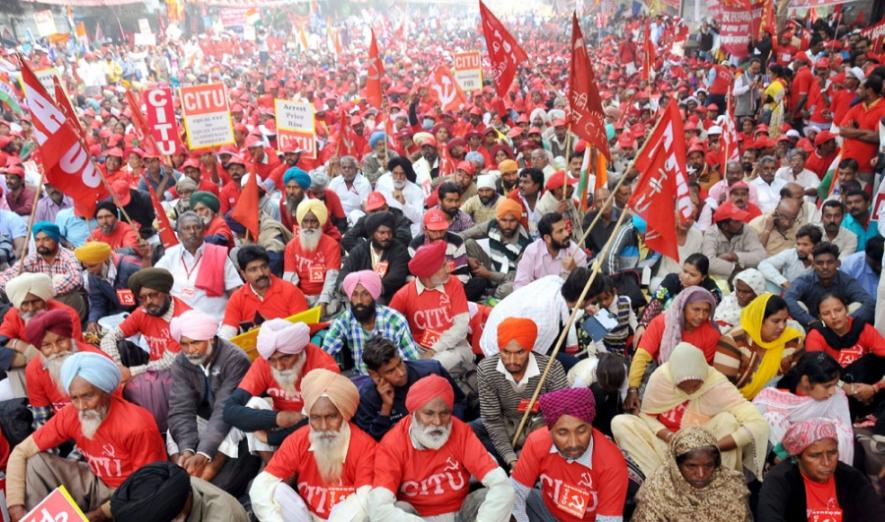Lives of Peasants in India: Case-studies of Selected Farmers

The Indian agricultural sector and farmers have been in a deep crisis over the past three years. A number of factors are known to have contributed to this agrarian crisis. There has been a steep rise in the cost of all major inputs. On the other hand, agricultural produce prices have not risen sufficiently to compensate for the rising cost of production.
Why has cost of production in agriculture increased so sharply? With the collapse of seed production and distribution by State agencies, improved seeds are now primarily supplied by the private sector and are often very expensive. Partial deregulation of fertiliser prices since the introduction of the Nutrient Based Subsidy in 2010 has led to a sharp rise in fertiliser prices. Power sector reforms and high excise duty on diesel have resulted in an increase in energy costs in agriculture. Expenses on plant protection have also increased significantly.
The Minimum Support Prices (MSP), declared by the government for 25 crops, have increased very little over the last three years. For many crops, the MSP is only slightly higher than the farmers’ cost of cultivation. Although MSPs are designed to act as a floor price, procurement on a significant scale happens only for paddy, wheat and sugarcane, and that too only in some States. Lack of procurement by government agencies forces farmers to sell their crop at prices that are often well below the MSP.
Over the last year, widespread distress among farmers has given rise to spontaneous peasant struggles in many parts of India. The All India Kisan Sangharsh Coordination Committee (AIKSCC), an umbrella organization, was founded in June 2017 to provide collective leadership to these peasant protests. AIKSCC began by organising Kisan Mukti Yatras covering nearly 10,000 kms over three months to mobilise farmer organisations from different regions. In the following months, large-scale peasant agitations were organised in Maharashtra, Telangana and Rajasthan. Two demands – waiver of agricultural loans to reduce the burden of debt on farmers and fair remuneration for the farmers’ produce (50% more than the cost of cultivation) – have been at the core of these agitations.
With these two core demands, the AIKSCC organised a farmers’ parliament, the Kisan Mukti Sansad, in New Delhi on November 20 and 21. Over these two days, about 50,000 farmers from all over the country occupied the Parliament Street in New Delhi. The Kisan Sansad discussed these demands and passed two bills: the ‘Farmers’ Freedom from Debt Bill, 2017’ and the ‘Farmers’ Right to Assured Remunerative Prices for Agricultural Produce Bill, 2017’. The Kisan Sansad demanded that these bills be taken up and passed by the national parliament.
On this historic occasion, students from Jawaharlal Nehru University, with support from the Society for Social and Economic Research, conducted detailed interviews of 51 farmers from various States. This was done with a view to interview farmers from different parts of India. Although no formal sampling was possible, the group tried to cover farmers from different regions, farmers growing different crops, and farmers belonging to different socio-economic categories. These interviews were based on a structured survey schedule which included information on the household details, land holdings, crops cultivated, cost of production and returns from agriculture and incomes from other sources. In this series, we shall present brief profiles of selected farmers interviewed by the group.
The 51 farmers surveyed over two days were from 49 villages in 38 districts and 14 States. Major crops produced by the respondents include cereals (paddy, wheat, maize, ragi and bajra), pulses (chickpea, pigeon pea, masur and mung), oilseeds (groundnut and mustard), and non-foodgrain crops (sugarcane, cotton, jute, chilly, arecanut and tea). Apart from variation in crops and regions, the respondents also vary in terms of size of their land holdings, access to irrigation facilities, the extent of use of family labour and reliance on hired labour. In terms of social groups, the interviewed farmers included dalits, adivasis, muslims, OBCs and others. Although most of the respondents interviewed were men, we managed to cover a few women farmers as well.
Many scholars have provided statistical analyses of agriculture as a sector and as a source of livelihood based on data from large-scale as well as village-level surveys. Instead of providing dry statistics about the farmers we surveyed, we have chosen to create profiles of selected farmers, and their households, based on our interviews. We hope that through these profiles we will be able to provide a glimpse into the lives of peasants from different parts of India. These profiles provide quantitative data about these farmers, which we hope will provide the readers some insights about relative profitability of different crops, conditions of irrigated and unirrigated agriculture, and conditions of farmers with different socio-economic positions. Our respondents told us about the sources from where they get credit and the levels of debt they have. We learnt about specific problems like whitefly and pink bollworm infestation in cotton, and crash of prices of chilly and potato. We also learnt from them how peasants in different parts of India coped with demonetisation. All of these themes would be covered in various contributions to the series.
The selection that we present has been made to represent the diversity of crops, regions and socio-economic status of farmers. We start off with a Kol adivasi peasant from Allahabad district (Uttar Pradesh) followed by a Mal Pahariya tribal farmer from Dumka district (Jharkhand). In subsequent contributions, the series will provide glimpses into the lives of a few cotton farmers from Haryana, Vidarbha, Telangana and Karnataka, an arecanut and coconut farmer from Tumkur (Karnataka), chilly farmers from Siddipet (Telangana) and Dhar (Madhya Pradesh), sugarcane farmers from Kolhapur (Maharashtra) and Western Uttar Pradesh, a paddy farmer from drought-hit Ariyalur (Tamil Nadu), and some paddy-wheat producers from the Gangetic belt.
Jesim Pais is with the Society for Social and Economic Research (SSER), Delhi.
Part 1 of the series can be read here.
Part 2 of the series can be read here.
Part 3 of the series can be read here
Part 4 of the series can be read here
Part 5 of the series can be read here
Part 6 of the series can be read here
Part 7 of the series can be read here
Part 8 of the series can be read here
Part 9 of the series can be read here
Part 10 of the series can be read here
Part 11 of the series can be read here
Part 12 of the series can be read here
Part 13 of the series can be read here
Part 14 of the series can be read here
Disclaimer: The views expressed here are the author's personal views, and do not necessarily represent the views of Newsclick.
Get the latest reports & analysis with people's perspective on Protests, movements & deep analytical videos, discussions of the current affairs in your Telegram app. Subscribe to NewsClick's Telegram channel & get Real-Time updates on stories, as they get published on our website.
























